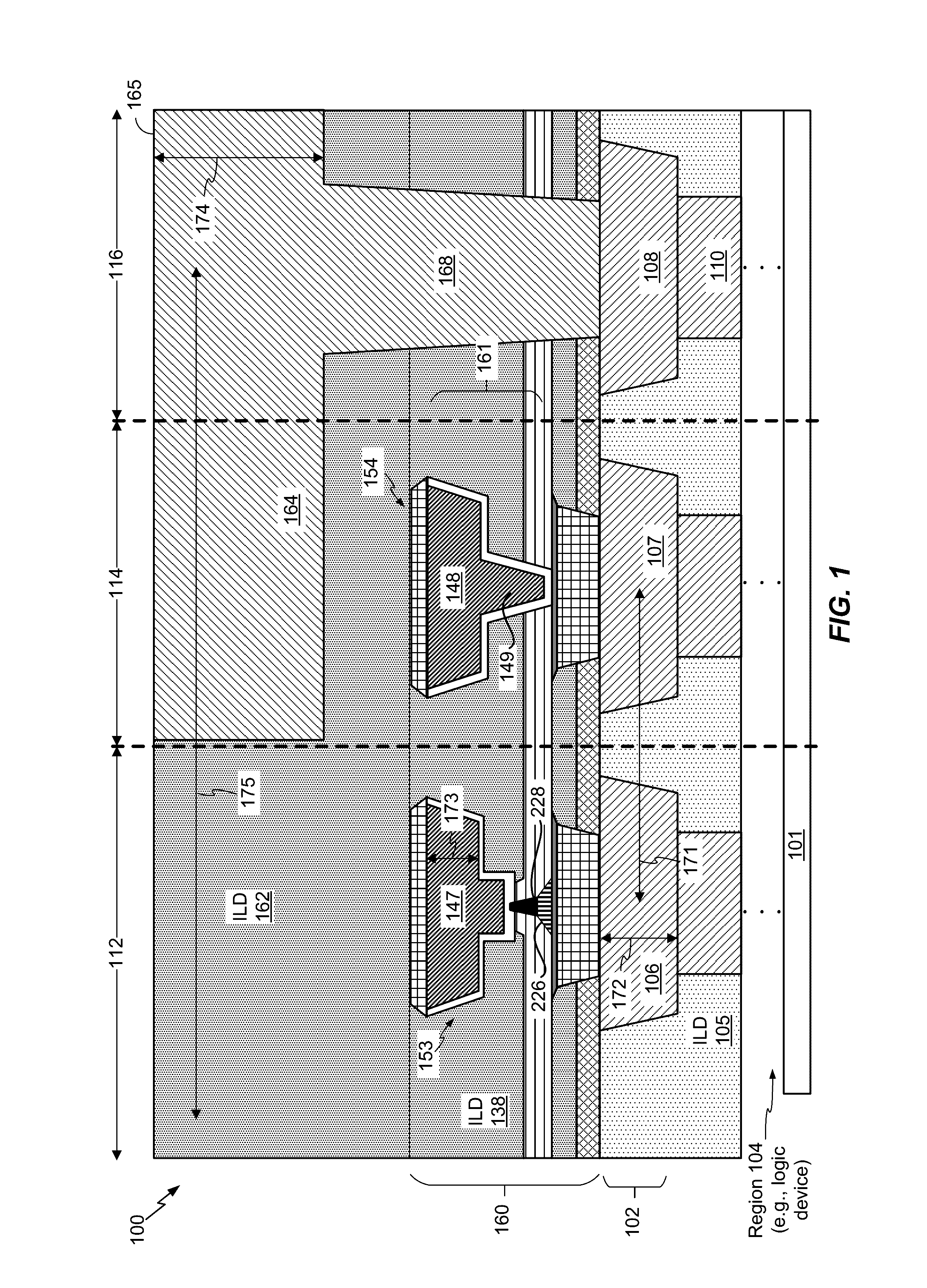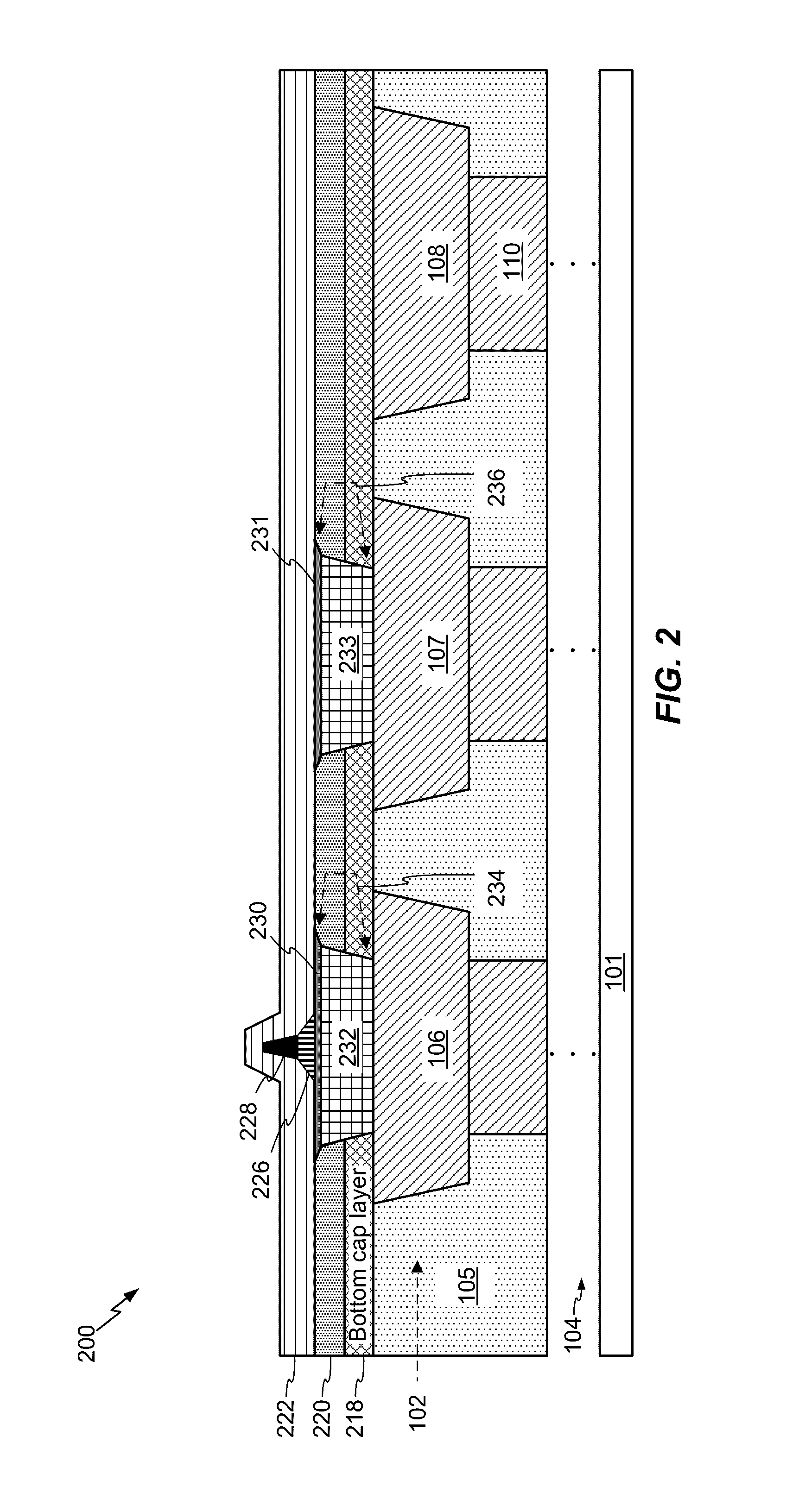Metallization process for a memory device
a technology of memory devices and metalization processes, which is applied in the direction of cad circuit design, instrumentation, computer aided design, etc., can solve the problems of increasing production costs, increasing fabrication costs and complexity, and increasing manufacturing costs, so as to reduce the size of resistance-based storage elements of the mram device, increase fabrication cost and complexity, and high data storage density
- Summary
- Abstract
- Description
- Claims
- Application Information
AI Technical Summary
Benefits of technology
Problems solved by technology
Method used
Image
Examples
Embodiment Construction
[0029]Referring to FIG. 1, a particular illustrative example of a device is depicted and generally designated 100. The device 100 may be included within an integrated circuit, such as a semiconductor die.
[0030]The device 100 includes a substrate 101, such as a silicon substrate. The device 100 further includes a region 104. The region 104 may include one or more devices formed using a plurality of layers of the device 100. For example, the region 104 may include a logic device (e.g., a processor, or another device) that is formed using a complementary metal-oxide-semiconductor (CMOS) logic process. The region 104 may further include wiring associated with the logic device. For example, the wiring may connect the logic device to the via 110.
[0031]The device 100 further includes one or more first structures formed using a plurality of metallization layers, such as a plurality of metallization layers associated with a back-end-of-line (BEOL) metallization process. To illustrate, FIG. 1...
PUM
 Login to View More
Login to View More Abstract
Description
Claims
Application Information
 Login to View More
Login to View More - R&D
- Intellectual Property
- Life Sciences
- Materials
- Tech Scout
- Unparalleled Data Quality
- Higher Quality Content
- 60% Fewer Hallucinations
Browse by: Latest US Patents, China's latest patents, Technical Efficacy Thesaurus, Application Domain, Technology Topic, Popular Technical Reports.
© 2025 PatSnap. All rights reserved.Legal|Privacy policy|Modern Slavery Act Transparency Statement|Sitemap|About US| Contact US: help@patsnap.com



